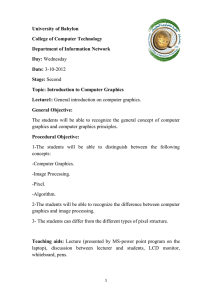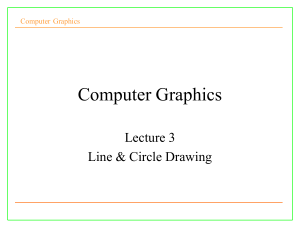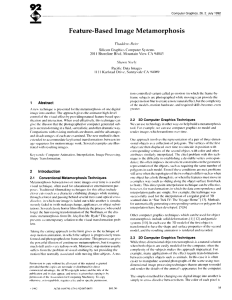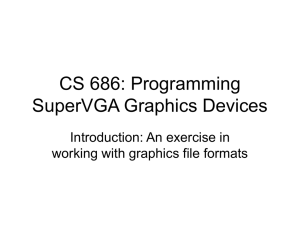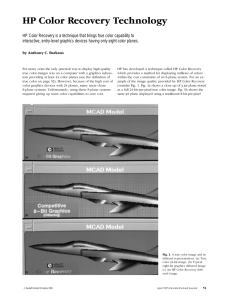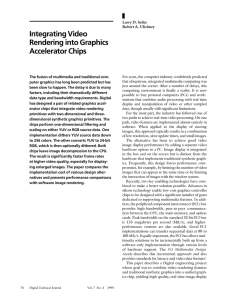Introduction to computer graphics Lecture One:
advertisement
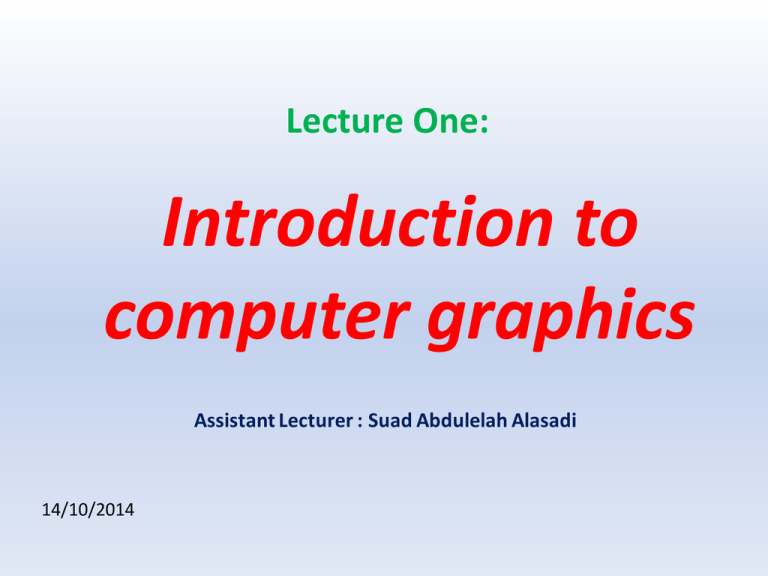
Lecture One: Introduction to computer graphics Assistant Lecturer : Suad Abdulelah Alasadi 14/10/2014 What is computer graphics? Computer graphics provides a set of tools to create pictures and to interact with them in natural ways. The tools consist of both hardware and software, and together they permit programmers to fashion programs with a strong graphics capability. Applications of computer graphics •Entertainment • Computer-aided design • Scientific visualization • Training • Education • E-commerce • Computer art Terms and Concepts Image processing (more precisely, digital image processing) is the field that deals with methods, techniques, and algorithms for image manipulation, enhancement, and interpolation. Computer graphics is the field concerned with the generation, manipulation, and storage of digital graphical data. This includes still images (two- and three-dimensional), animated graphics, and interactive images (virtual reality). In fact, most digital data that is not text, software, or audio, is graphics data. A pixel (from picture element) is the smallest unit of a digital image. In the computer, a pixel is represented by its color code, which is either a gray scale value or the three components of a color. We tend to think of a pixel as a small dot, circular or square. (PIX [picture] Element) The fundamental display element of an electronic screen or bitmapped image. Screen resolution is rated by the number of horizontal and vertical pixels; for example, 1024x768 means 1,024 pixels are displayed in each row, and there are 768 rows (lines). Likewise, bitmapped images are sized in pixels: a 350x250 image has 350 pixels across and 250 down. Pixel Structures In storage, pixels are made up of one or more bits. The greater this "bit depth," the more shades or colors can be represented. The most economical system is monochrome, which uses one bit per pixel (on/off). Gray scale and color typically use from four to 24 bits per pixel, providing from 16 to 16 million colors. Displaying the Pixel On a display screen, pixels are either phosphor or liquid crystal elements. For monochrome, the element is either energized fully or not. For gray scale, the pixel is energized with different intensities, creating a range from light to dark. For color displays, the red, green and blue sub pixels are each energized to a particular intensity, and the combination of the three-color intensities creates the perceived color to the eye. Computer Graphics vs. Image Processing In computer graphics, a computer is used to create a picture. Image processing, on the other hand applies techniques to modify or interpret existing pictures. The end Thanks for listening






